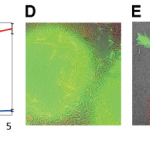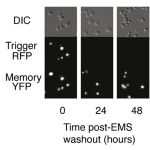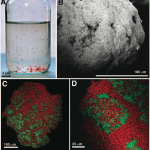Research
Last week, the House of Representatives approved an amendment to a 2013 spending bill that would prohibit the National Science Foundation from devoting any of its budget to its political science program, which, according to Inside Higher Ed, allocated around $11 million in peer-reviewed grants this year. The amendment was the brainchild of Congressman Jeff Flake of Arizona, who objected to NSF funding studies that "might satisfy the curiosities of a few academics" without benefiting society. Among the previously funded studies Flake apparently considers to be poor use of taxpayer funds are…
No technology is inherently good or evil, it's the use of that technology that determines its value. A blade can be used in surgery to save a life, or as a weapon to take one. The ballistics that enable missiles to destroy enemies also enables the launch of communication satellites and exploration of other worlds. For quite a while, I've been reading +Jeff Jarvis' commentary on these issues in the realm of the internet. His principal argument is that regulation that aims to block technology in order to keep people safe will also block the innovation and potential benefits of that technology…
The Center for Public integrity's Jim Morris was the first to report that two long awaited cancer mortality studies of US workers exposed to diesel exhaust finds significantly elevated levels of lung cancer. Researchers with the National Cancer Institute (NCI) and CDC's National Institute for Occupational Safety and Health (NIOSH) proposed the studies two decades ago, going great lengths to address methodological limitations identified in previous epidemiological studies of diesel exhaust-exposed workers. The bottom line, and with now stronger evidence than ever, there should be no question…
I grew up on the coast of California, and I loved to surf. At my favorite break, Pleasure Point, the best waves were often at low tide, but low tide also meant seaweed. Lots of seaweed.
[Source]
The giant kelp of Monteray Bay is an astonishing organism. It's not actually a plant, it's a brown algae, and it can grow 12 inches per day. This rapid growth makes it an ideal resource, and a bane of surfers that get their fins caught in thick mats.
You can't tell, but it was definitely kelp that made me fall, not the fact that I was too far forward and unable to turn. No, really...
Brown algae…
Ms. Madeline Loftus, 24, was just one of the 50 individuals who lost their lives on February 12, 2009 when Continental Flight 3407 crashed in a neighborhood near Buffalo, NY. The NTSB investigation and a frightening PBS Frontline investigation called "Flying Cheap" identified airline industry practices that compromise pilots' fitness for duty, including severe fatigue, as contributors to the disaster.
The Feb 2009 Pinnacle/Colgan/Continental airline disaster was not the first one in which fatigue was identified as a contributing factor in pilots' errors and poor performance. Following an…
Just before 8:00 pm local time, a powerful burst of rock exploded in an area where at least 20 miners were working in the Lucky Friday mine. All the miners escaped to safety but several remain hospitalized. This silver mine in the Coeur d'Alene region has been the site of numerous serious incidents this year, including two fatalities. The first on April 15, 2011, a cave-in at 6,000 feet that took the life of Larry "Pete" Marek, 53. The second, the November 17, 2011 incident that took the life of 26 year old Brandon Gray. Relevant to yesterday's catastrophic event, the mine operator…
It's too late for Ronald Martin of Dema, Kentucky. "I'm in last stage of black lung," he wrote in shaky script, "please help the miners so they won't suffer like I suffer. I can't breathe but a little." Mr. Martin sent his note to the Labor Department's Mine Safety and Health Administration (MSHA) to comment on the agency's proposed rule to reduce workers' exposure to respirable coal mine dust---the dust that damaged his lungs so severely. Other coal miners also sent their comments to MSHA, urging the agency to put a more protective regulation in place as soon as possible to prevent…
An ad hoc committee of the Institute of Medicine (IOM) identified a litany of potential benefits of including information about individuals' occupations, industry, and work environment in their electronic health records (EHRs). The reason the question was posed at all stems from a provision in the American Recovery and Reinvestment Act of 2009 which provides hefty incentives for health care providers to convert patients' medical records from paper to electronic form. At the time the bill was passed, one reporter noted that only about 8 percent of the nation's hospitals and 17% of its…
Freshman congressman Larry Bucshon (R-IN) scolded OSHA chief David Michaels for using the term "cancer" as a buzz word. The congressman, who is also a thoracic surgeon, said:
"I don't like it when people use buzz words that try to get people's attention, and cancer is one of those."
The exchanged occured last week at a House congressional oversight hearing called "Workplace Safety: Ensuring a Responsible Regulatory Environment," where Members were examining some of OSHA's enforcement and regulatory initiatives. Assistant Secretary of Labor for OSHA, David Michaels mentioned lung cancer in…
When folks in my lab think about biological problems, we think about basics. A pathogen has some molecular component that trips a sensor on the outside of a cell. That sensor (the receptor) grabs on to some adapter proteins and starts a cascade of chemical reactions catalyzed by various enzymes, which eventually leads to the activation of a transcription factor or factors that changes the behavior of a cell. We think at the level of the cell, at the level of the protein and at the level of the molecule. Occasionally, if we write a paper and the reviewers insist, we might do an assay to see if…
I felt a sense of déjà vu Tuesday morning when I heard NPR's Nell Greenfieldboyce reporting on Senator Tom Coburn's attacks on National Science Foundation-funded research. I realized that the same thing happened last August, and I wrote about it in a post called "Scoring Political Points by Misunderstanding Science." Last year, the report mocked research into addiction and older adults' cognition (among many other projects) because the projects involved administering cocaine to monkeys and introducing senior citizens to Wii games. This year, the projects up for ridicule include…
[Updated 9/21/11: see below]
Ka-chunk, ka-chunk, ka-chunk, ka-chunk, ka-chunk......is the familar sound around house framing and roofing jobs of the pnuematic nail gun. !Expletive! Expletive! Argh....Expletive!....is the cursing yelps from guys whose fingers, hands, and other body parts are punctured by nails inadvertently shot from these construction tools. An estimated 37,000 individuals in the US are treated annually in hospital emergency rooms for nail gun injuries. Moreover, nail guns are responsible for the most tool-related hospital admissions for workers in the construction trades…
That's the title of my slightly insane talk at the DAMOP (Division of Atomic, Molecular, and Optical Physics of the American Physical Society) conference a couple of weeks ago, summarizing current topics of interest in Atomic, Molecular, and Optical Physics. I'll re-embed the slides at the end of this post, for anyone who missed my earlier discussion.
I put a ton of work into that talk, and had a huge amount of material that I didn't have time to include. I'd hate for that to go to waste, so I'm going to repurpose it for blog content over the next week or so. It'll probably be about a half-…
by Dick Clapp, DSc, MPH
The documentary "Semper Fi: Always Faithful" was screened at the Congressional Auditorium in the Capitol Visitors Center on a hot, humid evening in Washington, DC on June 23. Congressman Brad Miller (D-NC) welcomed the audience of Congressional staff, North Carolina Senator Richard Burr (R-NC), and approximately 150 audience members and representatives from groups such as the Blue-Green Alliance, Environmental Working Group (EWG) and interested individuals.
Congressman Miller said he is approached by many groups seeking his help to move large bureaucracies or make…
Last month I wrote about my friend Devin Burrill's paper about synthetic memory in yeast cells. There were a lot of really interesting questions left in the comments, and I asked Devin if she would write a guest post to answer them. She agreed and here it is, answers to your questions straight from the author!
Hello Readers!
My name is Devin, and I am so incredibly grateful to Christina for allowing me to write an entry on her awesome blog. Christina and I are friends and work together in the lab of Pamela Silver at Harvard Medical School. I am writing in response to a number of excellent…
As Travis Saunders has explained, evidence is accumulating about the unhealthy effects of excessive sedentary time. This isn't just because sitting burns fewer calories than walking or standing, but because sedentary behavior is associated with changes in triglyceride uptake, HDL cholesterol, and insulin resistance. And bouts of intense exercise every morning or evening can't completely offset the effects of spending several hours sitting at a desk or behind the wheel.
Given that a large segment of our population works at sedentary jobs, this is disturbing news. But a recent story by NPR's…
Symbiosis is everywhere. From the Greek for "living with," symbiosis is simply a close association between two different species in nature. These relationships can be mutualistic, parasitic, or somewhere in between. Bacterial symbionts live inside bodies, like the bacteria that help us and other animals digest our food, and they live inside cells, like the bacteria that live in plant roots and provide their hosts with nitrogen. They can be metabolic, hygienic, or photosynthetic; ectosymbiotic, on the host surface, or endosymbiotic, inside the host's cells. Back in the 1860's biologists…
Cells permanently change their behavior in response to temporary changes to the environment, a kind of biological memory that controls processes as important and complex as how stem cells differentiate into specific tissues or how the immune system "remembers" dangerous pathogens. At its simplest, cellular memory is achieved with a positive feedback loop--once activated by some external signal, the feedback loop will continually activate itself, even as the cell divides and the signal is taken away. In synthetic biology we can recreate such simple feedback loops, genetic circuits built of…
Helen Pearson has just written a fascinating Nature News article about a British cohort study - the National Survey of Health and Development, run by the Medical Research Council - that's been following more than 5,000 subjects since their births in 1946. Cohort studies take groups of people who share a common characteristic, such as being born at a particular time or place or sharing a particular job, and follow them over a span of time. (In prospective cohort studies, the study period begins with enrollment; in retrospective cohort studies, medical records are used to study subjects' pasts…
One organism's trash is another organism's treasure. Our cellular wastes, carbon dioxide and water, nourish plants, which with added energy from sunlight produce the oxygen and sugars that we need to survive. At microscopic scales, these cycles of waste and food can get much more complicated, with many species of microbes working together to survive in harsh environments with limited nutrients.
When organisms (like us) digest sugars made of carbon (C), hydrogen (H), and oxygen (O), they split them up into carbon dioxide (CO2), hydrogen ions (H+) and high-energy electrons (e-) that were…



